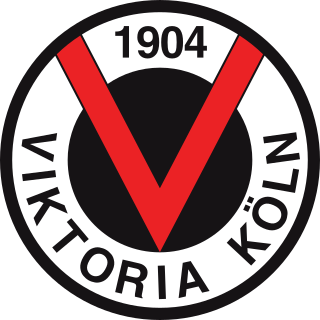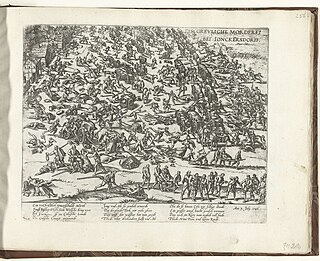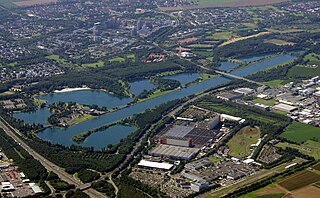
Bonn is a federal city in the German state of North Rhine-Westphalia, located on the banks of the Rhine. It has a population of over 300,000. About 24 km (15 mi) south-southeast of Cologne, Bonn is in the southernmost part of the Rhine-Ruhr region, Germany's largest metropolitan area and the second biggest metropolitan region by GDP in the European Union, with over 11 million inhabitants. The city served as the capital of West Germany from its formation in 1949 until 1990 and as the capital of reunited Germany from 1990 until 1999 when the seat of government was moved back to Berlin. Bonn is the birthplace of Germany's present day constitution, the Basic Law.

Cologne is the largest city of the German state of North Rhine-Westphalia and the fourth-most populous city of Germany with nearly 1.1 million inhabitants in the city proper and over 3.1 million people in the Cologne Bonn urban region. Cologne is also part of the Rhine-Ruhr metropolitan region, the second biggest metropolitan region by GDP in the European Union. Centered on the left (west) bank of the Rhine, Cologne is located on the River Rhine, about 35 km (22 mi) southeast of the North Rhine-Westphalia state capital Düsseldorf and 25 km (16 mi) northwest of Bonn, the former capital of West Germany.

North Tonawanda is a city in Niagara County, New York, United States. The population was 31,568 at the 2010 census. It is part of the Buffalo–Niagara Falls Metropolitan Statistical Area. The city is named after Tonawanda Creek, its south border.

The Altmark is a historic region in Germany, comprising the northern third of Saxony-Anhalt. As the initial territory of the March of Brandenburg, it is sometimes referred to as the "Cradle of Prussia", as by Otto von Bismarck, a native of Schönhausen near Stendal.

RheinEnergieStadion, formerly Müngersdorfer Stadion or Müngersdorfer Stadium, is a German football stadium in Cologne. It was built on the site of the two previous Müngersdorfer stadiums. It is the home of the local 2. Bundesliga team, 1. FC Köln. The stadium was one of eight stadiums to host UEFA Euro 1988, with USSR beating Netherlands 1-0 and Italy beating Denmark 2-0 in the group stage. It was one of five stadiums hosting both the 2005 FIFA Confederations Cup and 2006 FIFA World Cup, hosted the 2020 UEFA Europa League Final behind closed doors, and was one of ten host stadia for UEFA Euro 2024. Local energy company RheinEnergie AG currently holds the naming rights to the stadium, hence it was known as the Stadion Köln for the final.

Poll is a quarter of the city of Cologne, in North Rhine-Westphalia, Germany. It is part of the borough of Porz.

Kaarst is a town in Germany. It lies in the district of Rhein-Kreis Neuss in North Rhine-Westphalia. It is 5 km west of Neuss and 12 km east of Mönchengladbach.

Bundesautobahn 61 is an autobahn in Germany that connects the border to the Netherlands near Venlo in the northwest to the interchange with A 6 near Hockenheim. In 1965, this required a redesign of the Hockenheimring.

Alsdorf is a municipality in the district of Aachen, in North Rhine-Westphalia, Germany. Until the 21st century Alsdorf was a mining area, but now many service companies have established themselves in Alsdorf. Alsdorf has an indoor arena, a cinema, a mining museum and a zoo. One of Alsdorf's famous sights is the old Castle.

Meckenheim is a town in the Rhein-Sieg district, in North Rhine-Westphalia, Germany.

FC Viktoria Köln is a German association football club from the city of Cologne in North Rhine-Westphalia, that competes in the 3. Liga, the third tier of German football.

Lindenthal is a borough of the City of Cologne in Germany. It includes the quarters Braunsfeld, Junkersdorf, Klettenberg, Lindenthal, Lövenich, Müngersdorf, Sülz, Weiden and Widdersdorf. It has about 153,000 inhabitants and covers an area of 41.8 square kilometers.

Benrath is a quarter of Düsseldorf in the south of the city, part of Borough 9. It has been a part of Düsseldorf since 1929. Benrath has an area of 5.99 km2 (2.31 sq mi), and 17,178 inhabitants (2020).

The Bundesstraße 96 is a federal highway in Germany. It begins in Zittau in Saxony, close to the border triangle between Germany, Poland, and the Czech Republic, heads north through Berlin and ends in Sassnitz on the island of Rügen in the Baltic Sea. Some sections of B 96 form a part of the European route E22.

Ehrenfeld is a borough (Stadtbezirk) of the City of Cologne in Germany. It includes the seven quarters Bickendorf, Bocklemünd, Mengenich, Ehrenfeld, Neuehrenfeld, Ossendorf and Vogelsang. It has about 109,500 inhabitants and covers an area of 23.98 square kilometres. The district borders with the Cologne districts of Chorweiler to the North, Nippes and Innenstadt to the East and Lindenthal to the South-West.

The Bundesstraße 9 is a German federal highway. It follows the left side of the Rhine from the Dutch border at Kranenburg upstream to the French border near the city of Lauterbourg, where it connects to the French A35 autoroute. The origins of the road can be traced back to Ancient Rome.

The Junkersdorf massacre was an incident in the Cologne War of 1583–1588.

Fühlinger See is a series of connected lakes in the Cologne suburb of Fühlingen in the German state of North Rhine-Westphalia.
The Baños del Ángel or Baños de Zeid are an Islamic baths located in the city of Toledo, in Castile-La Mancha, Spain. These are undoubtedly one of the best preserved among the eight that still maintain recognizable structures within the Historic Quarter of Toledo.


















